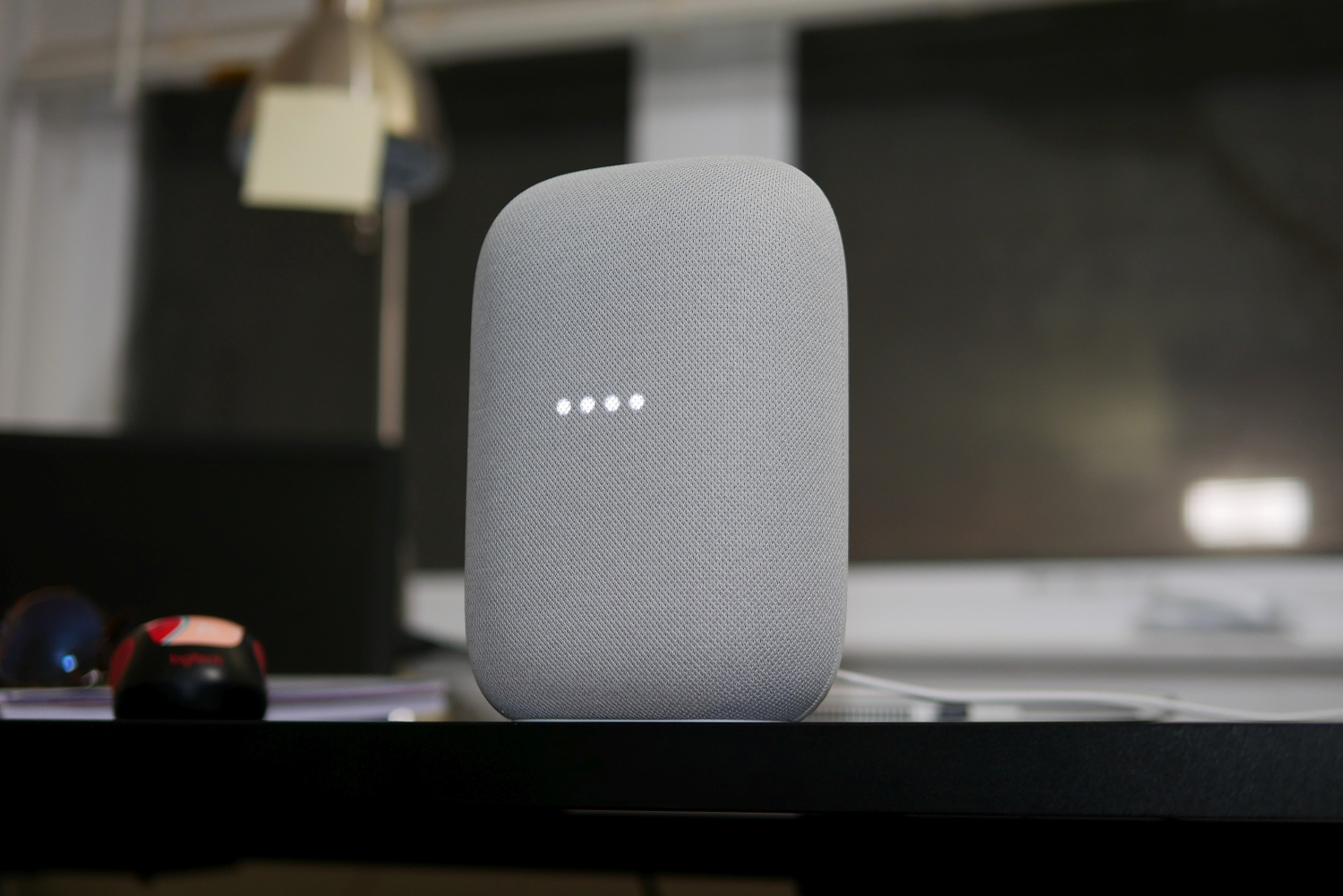Google’s original Home device was announced at its developer conference in 2016, but 2020 marked a new offering — the Google Nest Audio. When compared to its older sibling, how does the Nest Audio compare to the Google Home? We took a look at both devices in this breakdown, pitting the Google Nest Audio versus Google Home.
Pricing and availability

The Google Home launched at $130 in 2016, but in 2020 it became more difficult to locate; where it could be found, we found prices starting at around $79 — although for this aging product, sites such as eBay might be your best bet. Google Nest Audio sells for $100, or at a discount of $20 off for every two units you purchase from the Google Store. Google Nest and Home products can now be found in various countries globally, including the United States, United Kingdom, Australia, Canada, France, Germany, Japan, Denmark, South Korea, Mexico, the Netherlands, Norway, Spain, and Sweden.
Design

Google Home launched with a cylindrical speaker design, in which the bottom third was a gray speaker grille, and the upper portion was stark white plastic. The top of the device was angled, with the surface showcasing colored status lights and capacitive touch controls. A button is located on the rear of the unit, which allows the user to mute the device. The entire device stood 5.62 inches tall and had a diameter of 3.79 inches — small enough to fit into most home settings.
Turning attention to the Google Nest Audio, we find a device built from plastic and coated entirely in a fabric exterior. While you can purchase accessories for the Google Home to allow for color personalization, you can buy the Nest Audio with fabric in colors of chalk, charcoal, sage, sand, or sky out of the box. The Nest Audio has a classic “tombstone” shape with four lights on the unit’s front face to indicate status and volume controls on the side of the speaker. Privacy is also available on the Nest Audio via a toggle switch on the rear of the device.
Smart home control

The original Google Home features 802.11ac Wi-Fi and Bluetooth 4.1 connectivity, while the Nest Audio also features Wi-Fi 802.11ac and adds on Bluetooth 5.0 connectivity. We don’t think you’ll see huge differences when controlling your smart home through either of these devices, but what you will find is a wide array of devices to control.
One original criticism of Google Home was the lack of Google-compatible smart devices. Now, as the market has matured, you’ll find a collection of different gadgets available for your 21st-century smart home. Whether you have a
Speakers and sound

Here is where things begin to get interesting. Google Home launched with a 2-inch driver and dual 2-inch passive radiators. For the time, the sound was acceptable, but the Google Nest Audio takes things to the next level. If you were to crack open your Nest Audio (please don’t), you would find a 2.95-inch woofer and a 0.75-inch tweeter. The arrangement of a larger woofer and a smaller tweeter allows for better audio reproduction, with the Nest Audio outputting better bass notes and more crisp highs. Of course, if you’re after the ultimate audio product from Google, you should also take a look at the Google Home Max.
When it comes to listening, the Nest Audio will also be able to keep a better ear on you thanks to its three far-field microphones; compare this to the original Google Home’s two far-field microphones. The Google Nest Audio also features voice match technology to identify who is currently speaking to the unit. Suppose you’re not already familiar with Google Assistant. In that case, we recommend you learn a bit more, as the Assistant makes it easy to call up your favorite streaming services, control smart home appliances, and much more.
Applications

Another original criticism of the Google Home when it launched in 2016 was its lack of applications — or as Google calls them, Actions — compared to Amazon’s Echo units. Today, you can find a collection of great applications for both the
If music isn’t your thing, you can still take enjoyment from applications that allow you to retrieve the weather, begin a bedroom routine, set alarms, translate spoken words into other languages, and even bring up bedtime stories for the kids. If you have a smart home with lots of devices, you can download the Google Home app to sort out your collection and help you keep in control of your futuristic Jetsons-style home, apartment, or office.
Conclusion
Both the Google Home and Google Nest Audio smart speakers are little wonders, and if you don’t care too much about music, we think the
However, when it comes to the overall winner of this battle, Google Nest Audio brings more modern design, better speakers for music listening, and a new exterior produced from 70% recycled plastic — a welcomed win for the environment.


